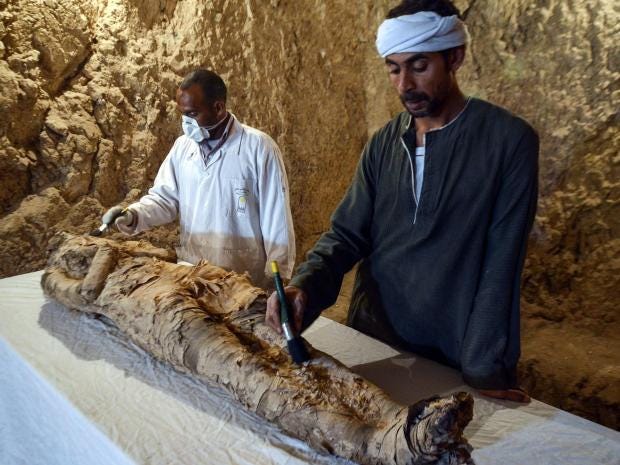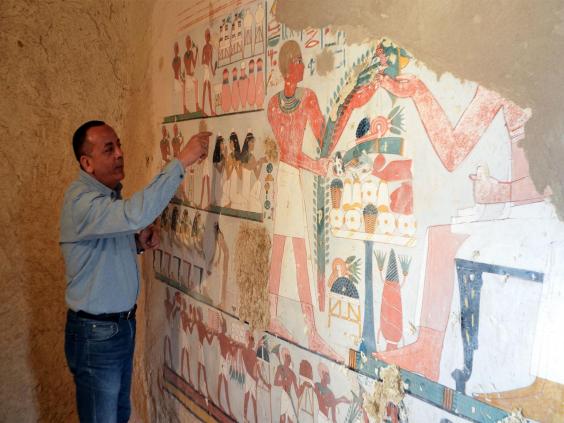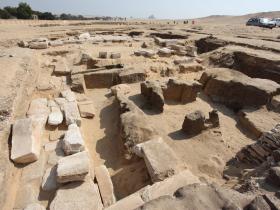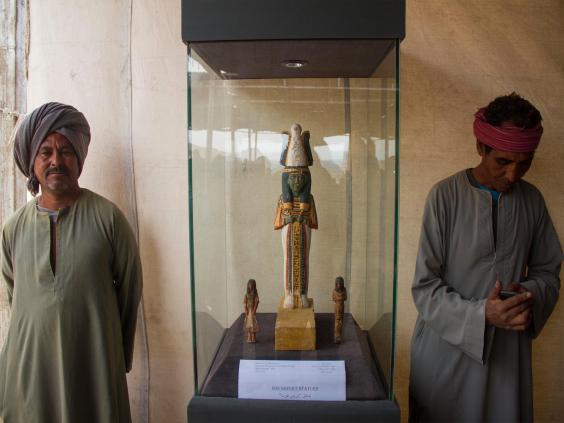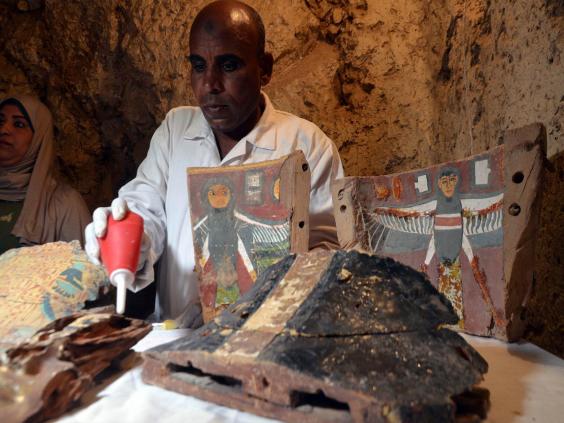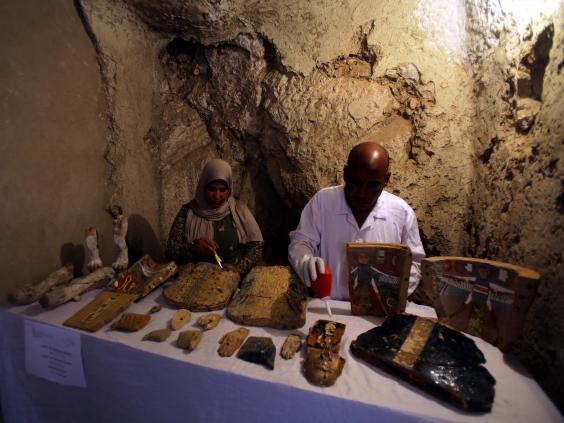The Egyptian ministry of antiquities announced on Saturday the discovery of two ancient tombs at the necropolis of Draa Abou Naga, part of the UNESCO world heritage of Thebes near Luxor. The occupants of the private tombs are as of yet unknown but believed by the ministry to date back to the 18th dynasty (1550BC to 1292BC). It’s the latest find of a series of discoveries in Draa Abou Naga, and Egypt in general, after the minister, Khaled Alnani, announced at the beginning of 2017 that it would be “a year of discoveries.”
The two tombs, seven and ten metres deep respectively, were found to contain a number of artefacts, including 40 funerary cones, 36 Usahbti statues, and funerary furniture, some of which were gold plated.
Of particular interest is a large painted wall, which has survived almost intact. “It’s really beautiful,” says famed Egyptologist Zahi Hawass, “and typical 18th dynasty. It looks like it was painted yesterday. In my opinion, this could be the best painted wall discovered in Draa Abou Naga in the last 100 years.”
Also discovered were a number of mummies, skeletons, and a large painted statue of a woman named Isis Nefret, believed to be the mother of the tomb’s occupant, in the form of the Ancient Egyptian god of the afterlife, Osiris. “It’s in near perfect condition,” says Alnani.
Mostafa Waziry, who is leading the excavation, says he believes the find to be related to one that was announced three months ago. Less than 100 metres from the site his team announced the discovery of another important tomb, which Hawass described then as “the discovery of the year.” It contained a goldsmith named Amenemhat who lived 3,500 years ago, along with a host of other mummies and artefacts. It also included evidence that man named “Marty” was buried there, although his body was never discovered. Speaking of one of the bodies found in the most recent tomb, Waziry says: “I believe this is Marty.”
With his “year of discoveries” coming to an end, Alnany says that the results have been “exceptional.” Other notable finds this year include a Roman-era mass grave near the Upper Egyptian town of Minya, a previously unknown pyramid at the Dahshur necropolis, and an eight-metre tall statue of Psamtek I found in a suburb of East Cairo.
With tourism struggling since the revolution in 2011 and in the wake of recent terrorist attacks, Alnany is trying to use “the power of Egyptian monuments” to get positive images of the country back into the press. This year has seen a number of large choreographed press events for announcements of impressive discoveries, leading to suspicions of the ministry strategically releasing finds for maximum effect, although ministry officials deny this.
At the event in September, Waziry declared that they expected to find new discoveries in the area. “The next day, we started working immediately,” said Waziry, who says they only became aware of this latest find “10 days after the previous announcement.”
Speaking at Saturday’s event, Alnany mentioned how important it was to see tourism restored to Egypt. But with Egypt currently reeling from the biggest terrorist attack in its history, in which as many as 305 worshippers were gunned down in a mosque in North Sinai on 24th November, the coming season is expected to see a further drop in visitors.
The loss of Western tourism has greatly affected the ministry’s work, which in 2014, reported a 95 per cent drop in revenue from ticket sales, its main source of income. “If we have enough money then we have no problem,” says Alnany, “but if not, we have to balance our expenses between maintaining monuments and making excavations.”
With some of the world’s largest ancient monuments to maintain, Alnany is under pressure to make up this shortfall. According to Hawass, the ministry can spend up to LE 1.3 billion a year on maintenance of monuments alone. In addition, the Grand Egyptian Museum, under construction near the Great Pyramids, is estimated to cost over $1 billion, millions more than its original budget.
But according to Waziry, there are other projects in the pipeline. He maintains that no other new discoveries have yet been made, but that he believes they are about to uncover a new tomb in Draa Abou Naga “within weeks.” “What you see above ground is not more than 40 per cent of Ancient Egypt,” he says. “If you start digging anywhere, you’re going to find a lot.”
- More about:
- Egypt
- Draa Abou Naga
- Archaeology
